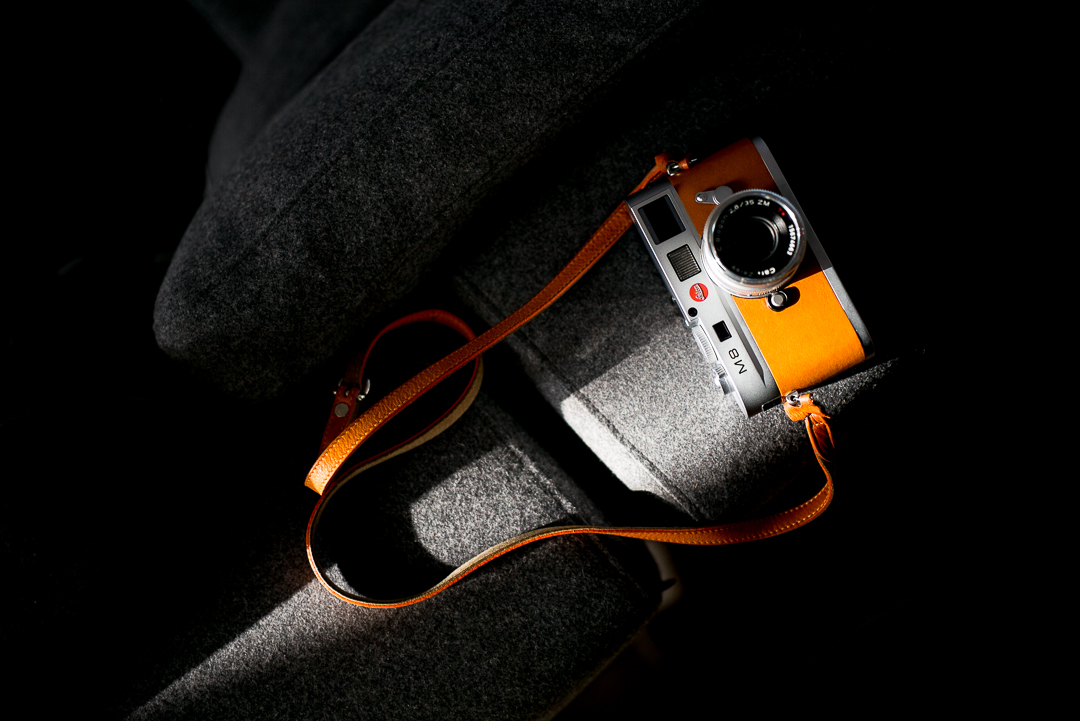I’ve been getting some emails from readers asking me what to look for when buying a used Leica M8. Well, here’s a checklist.
- All ‘normal’ things you’d check when buying any camera. That means checking all the buttons (also the wheel: mine doesn’t work perfectly), any visible damage to the camera, the viewfinder (filth or dust in the viewfinder system), etc. Black cameras easily loose their paint with normal use, especially on the bottom plate, but dents may be a sign of rough use and may affect the accuracy of the rangefinder.
- Rangefinder accuracy: if you want to get sharp pictures, you’ll need a calibrated rangefinder. You’ll need a lens and a computer to check this. Bring a tripod, mount the camera, take a few shots of objects with multiple distances from the camera. Focus carefully, hit the shutter and check for sharpness on your computer. The display on the camera is not good enough for proper assessment. Remember that sharpness is a combination of lens and rangefinder calibration. An ill calibrated rangefinder can work perfectly with an ill calibrated lens.
- The coffee stain: some M8s have a problem with the back screen. If the screen suffers from a ‘coffee stain’ in the screen, your screen may die in the near future. Leica has to replace these screens ten years after the production of the camera ends, which means till 2019. Screens are no longer made unfortunately, so Leica will make you an offer to upgrade your camera to a newer model, which would probably be the M-E.
- The shutter: yes, it is quite loud. And yes, there are some stories on shattered shutters on the M8. Leica used the same shutter as in the R8 and R9 for the original M8. The M8.2 featured a new shutter, which produces less noise, but is also one stop slower. It seems that the M8 shutter is slightly more sensitive to dirt and grit than other shutters. Some people think it’s best to opt for a low actuations M8.2, but there are plenty M8 users without broken shutters, myself included.
- Shutter actuations: A shutter won’t last forever. Here’s a link to a thread how to determine the amount of shutter actuations. Of course, a camera with 100K actuations should cost less than a camera with just 10K actuations.
- Green blobs, rainbow images, banding, etc: In the first batches some M8s showed some weird artifacts in the images. Don’t worry: this is fixed in all cameras. Some users still report a green stripe with strong lights present just outside the frame. You might want to test for that. And with regards to banding: all Ms tend to show banding at high ISO. Even my M240 does.
- Hot pixels: You see any red pixels in your magnified image? These are dead. Nothing to worry about, as long as there aren’t too many.
- The vertical line: This seems to be a persistent problem: a thin vertical line across a part of the image. Take a shot with the lens cap on, after you’ve cranked up the ISO and check on your computer on high magnification. I wouldn’t buy the camera if you see a line. Leica still remaps and replaces sensors if needed, so don’t worry too much about this issue if it develops after buying your second hand camera.
- Battery: make sure you get an original one, or even better: get two of them. If the camera hasn’t been used frequently, don’t expect the battery to be flawless and be aware that a new battery costs almost 100 Euros.
- IR-filters: As you know, the M8 sensor has a problem with IR light. If the camera you’re interested in has one or two IR-filters, you’ll save quite a bit of money. On the other hand, I used the M8 as a daily camera without any filters.
- Warranty: here in the Netherlands, the difference between buying a Leica M8 at a dealer or from a private person is 200-300 Euros. Usually, you get a warranty of 3-6 months. If you’re unsure about buying a camera like this, you might want spend a little extra and get the warranty. Personally, I’m OK with a little extra risk, knowing that as a second or even third owner, most problems will be solved by Leica.
Buying a used camera is never without any risk. And with the low proces of used Leica M8s, people that usually cannot afford a Leica might jump in at this stage. If the camera performs without any flaws, they will be happy, but if it turns out to be bad one, they’ll regret it ever so much. Bear in mind that the Leica M8 is a (almost) ten year old digital camera form the first generation of digital M cameras. I’m having a wonderful time with my M8, but manage your expectations before you buy one.
